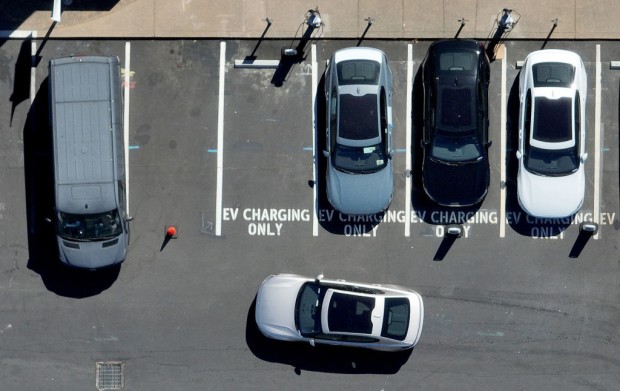Biden Admin Unveils Final Tailpipe Pollution Rules, Slowing EV Transition Until 2030
By John Lopez
Mar 20, 2024 03:20 PM EDT
Mar 20, 2024 03:20 PM EDT
The Biden administration has announced revised targets for electric vehicle (EV) adoption in the United States to balance environmental goals with industry concerns.
The Environmental Protection Agency (EPA) unveiled a final rule aimed at curbing tailpipe pollution, but with a slower transition to EVs until 2030.

(Photo : Photo by Justin Sullivan/Getty Images)
Originally, the administration set ambitious goals, aiming for 67% of all vehicle sales to be electric by 2032. However, facing pressure from automakers and unions, particularly in key battleground states like Michigan, the target has been lowered to as little as 35%.
EPA administrator Michael Regan emphasized that the new regulations focus on reducing greenhouse gas emissions despite the slower pace of EV adoption. The agency adopted a "technology neutral" approach, allowing automakers to meet emissions standards using various technologies, including gas-electric hybrids.
The revised plan projects EV sales to range between 35% and 56% of all sales between 2030 and 2032. While this represents a scaling back of initial ambitions, it reflects a compromise aimed at addressing industry concerns while making progress toward reducing emissions.
READ NEXT: Nissan Mulls EV Partnership With Honda to Form Powerful Japanese Alliance to Take on Overseas Rivals
The move comes amid a backdrop of increasing concern over climate change and the role of transportation in contributing to greenhouse gas emissions. Cars are a significant source of emissions, making the transition to cleaner vehicles a priority for environmental advocates.
However, concerns over job losses in the auto industry have prompted some pushback against rapid EV adoption. Labor unions, including the United Auto Workers (UAW), have expressed worries about the impact of EV manufacturing on employment.
The EPA's final rule aims to strike a balance, providing relief to automakers while still pushing for emissions reductions. It includes provisions that ease restrictions on heavy-duty pickup trucks, a move welcomed by the Detroit Three automakers.
Despite the adjustment in EV targets, the EPA estimates that the new regulations will still result in significant emissions reductions. By 2032, fleetwide tailpipe emissions are expected to be cut by 50% over 2026 levels, with a reduction of 7.2 billion tons of greenhouse gas emissions through 2055.
Critics of the revised plan argue that it could delay the transition to cleaner vehicles and exacerbate short-term pollution. However, supporters point to the need for a pragmatic approach that considers both environmental goals and economic considerations.
The announcement also comes at a time when the EV market is experiencing some challenges. While sales reached a record high last year, a slowdown in the fourth quarter prompted automakers to scale back production.
© 2024 VCPOST, All rights reserved. Do not reproduce without permission.
Join the Conversation